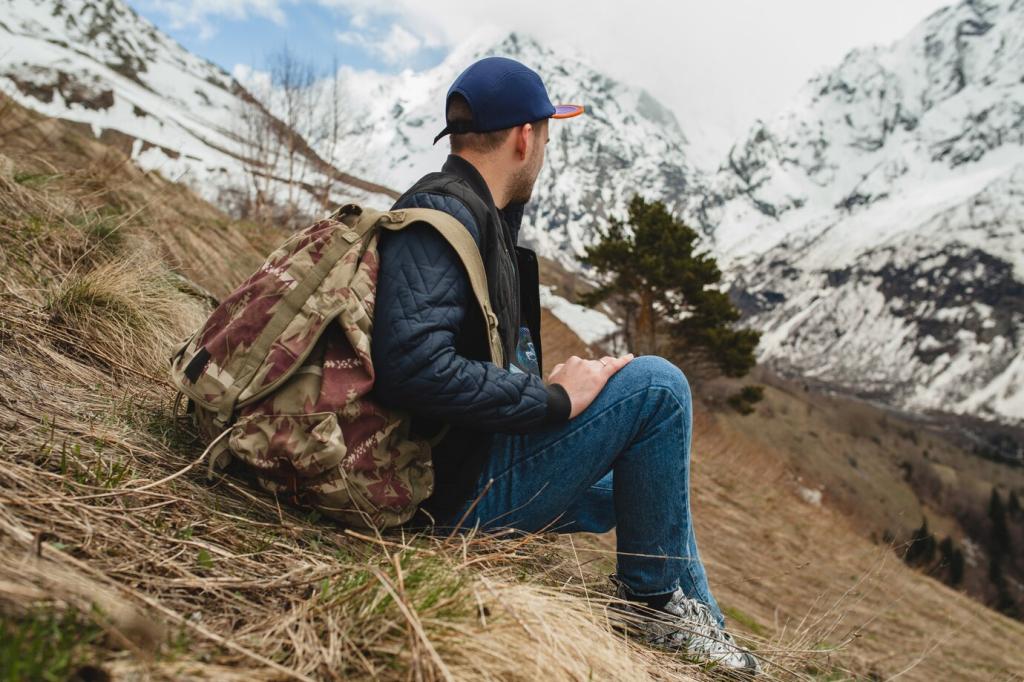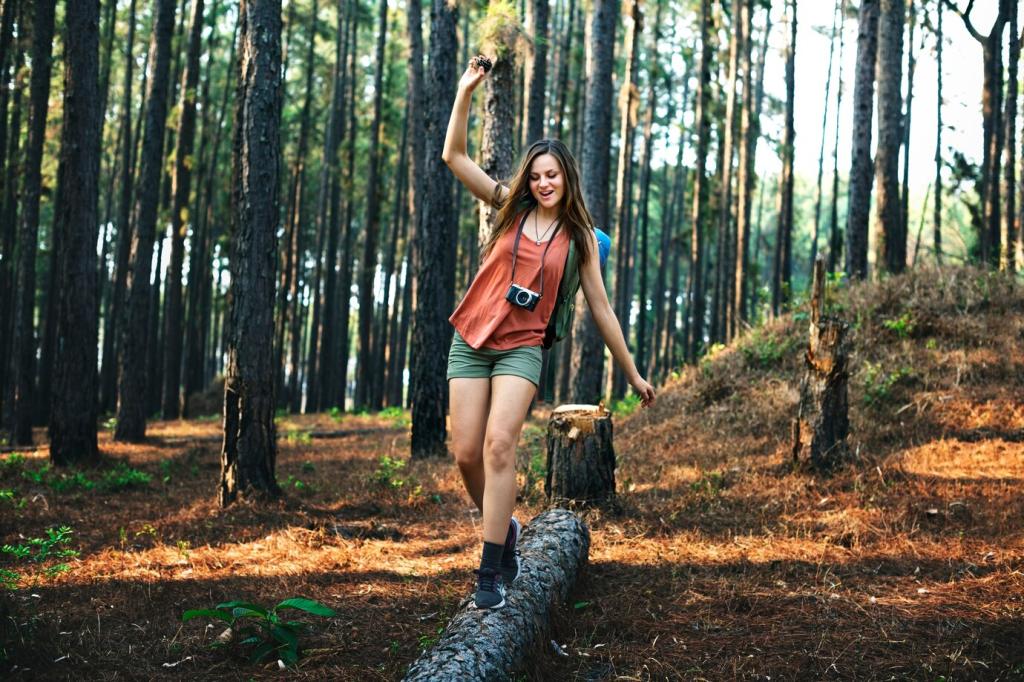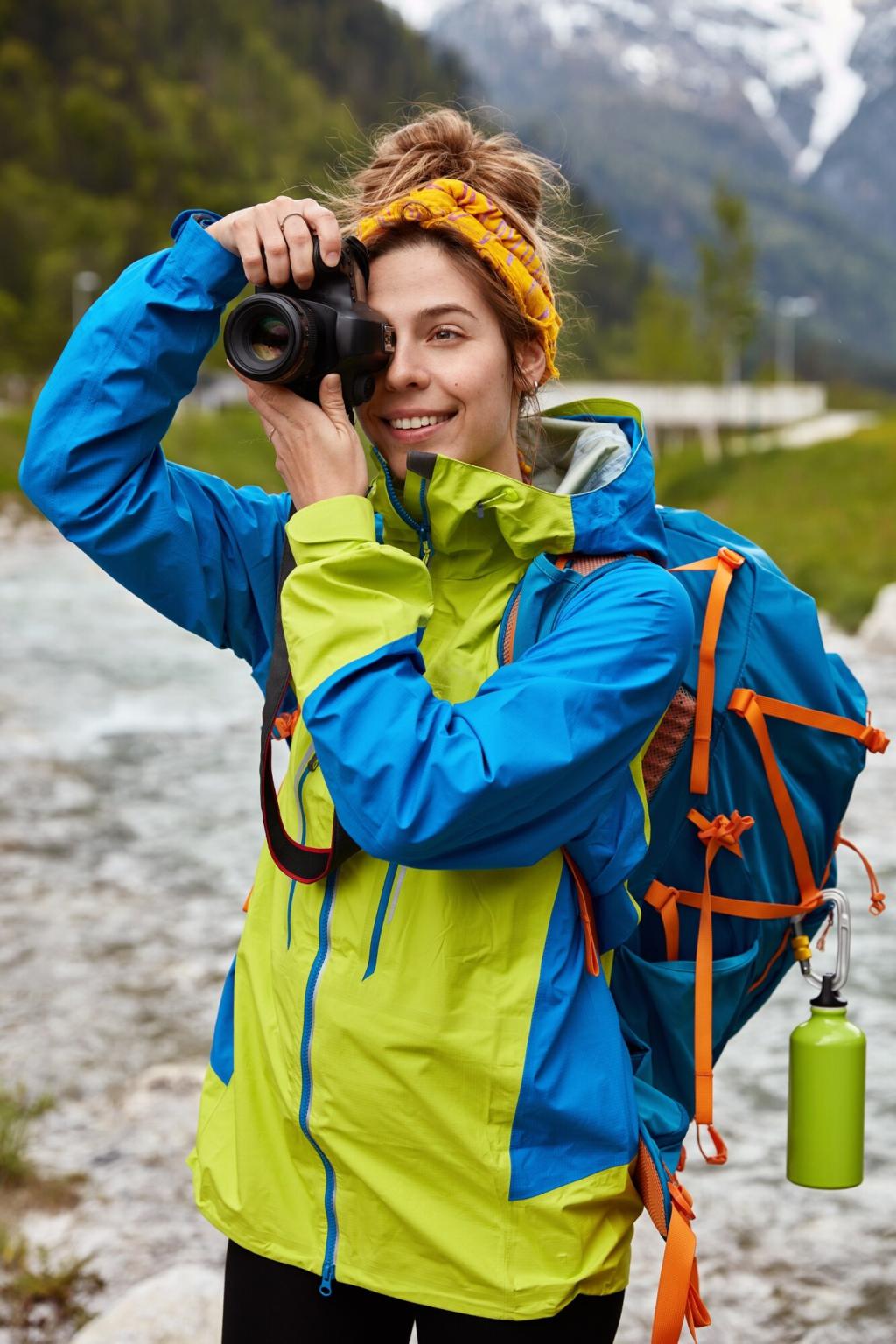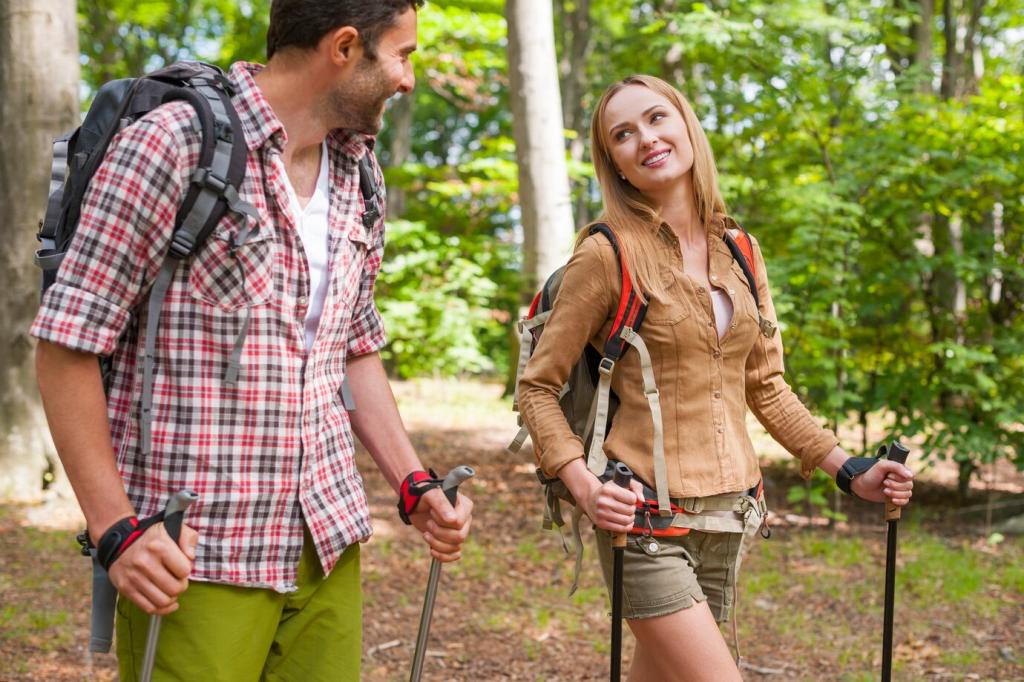Seasonal Hiking Tips with Scandinavian Style
Layer Like a Northerner: Comfort in Every Season
Start with a merino wool base layer that manages sweat without chill, add a lofty fleece or synthetic puffy for insulation, then seal it with a windproof, waterproof shell. Open vents on climbs, close them on ridgelines. Tell us your go-to midlayer combo and why it keeps you warm without feeling bulky.
Layer Like a Northerner: Comfort in Every Season
Shoulder seasons reward adaptability. Pair a light merino or technical synthetic base with a breathable softshell and a compact rain shell ready for squalls. Keep a thin puffy in your pack for sudden temperature drops. Share your smartest shoulder-season swap that keeps your kit lagom—just right—without overpacking.


Footwear and Traction the Nordic Way
Winter Grip and Warmth Without the Bulk
Insulated boots with aggressive lugs or removable microspikes keep you moving on packed snow and icy sections. Use wool socks with room for circulation to avoid cold toes. Share your trick for drying footwear overnight—newspaper, boot liners, or creative camp methods inspired by snowy cabin trips.
Mud, Rain, and Shoulder-Season Slop
In spring and autumn, waterproof or water-resistant shoes with supportive midsoles shine on boggy paths and slick roots. Gaiters keep mud out, while trekking poles add stability. If you’ve refined a post-hike cleaning ritual that extends shoe life, drop your steps below and help fellow hikers stay ready.
Summer Ventilation and Fjäll Stream Crossings
Breathable trail shoes drain fast and dry quickly after knee-deep crossings common on Nordic plateaus. Consider thin merino socks to prevent blisters and reduce odor on multi-day treks. Do you switch socks mid-day on hot hikes? Tell us how you manage moisture before hot spots become trouble.
Light, Weather, and Safety in Northern Conditions
Forecasts, Wind Chill, and Real-World Adjustments
Check mountain-specific forecasts and watch wind speeds—30 km/h on an exposed ridge can sap warmth fast. Adjust your pace, layers, and route accordingly. Comment with your favorite reliable forecast sources and how you translate numbers like wind chill into smart clothing choices on trail.
Navigation When Trails Disappear
In mist or fresh snow, cairns vanish. Carry a map, compass, and a downloaded offline route, and practice before you need them. Reflective accents help during dim hours. Share your best low-visibility tip, and tell us which landmarks or tactics keep you oriented when GPS batteries dip in the cold.
Winter Hazards and Early-Season Snowfields
Assess slopes for firmness, runout, and hidden ice. A lightweight traction device and careful footwork can prevent slides. If conditions look unsafe, turn back—Scandinavian style values humility over heroics. Tell us about a time you made the conservative call and how it turned the day into a smarter adventure.

Create cozy moments—hygge—with a warm drink, quiet conversation, and soft lamplight, then leave your campsite pristine. Use a stove where fires might scar rock, and scatter tent sites on durable ground. How do you build hygge on the trail while keeping your footprint nearly invisible?

Give nesting birds and reindeer space, avoid trampling lichens, and stick to paths in wet seasons to protect bogs. In berry season, take modestly and share the bounty. Tell us your favorite way to teach newcomers gentle trail manners that still feel joyful and welcoming.

Greet hikers, yield on narrow boardwalks, and keep noise low, especially at dawn and dusk. Scandinavian trails thrive on mutual respect. Share a brief story of a stranger’s small kindness that brightened your day and inspired you to pay it forward on the next hike.

Minimalist Aesthetics, Maximum Function
01
Lagom Packing: Just Enough, Thoughtfully Placed
Distribute weight so essentials sit close to your spine. Keep rain gear and gloves near the top for fast access when weather flips. What’s your personal lagom packing list for a shoulder-season day hike? Share it, and help others trim the excess while keeping real-world readiness.
02
Repair Culture and Long-Life Gear
Patch small shell tears with repair tape, refresh waterproofing, and replace worn laces before they fail on trail. Scandinavian hikers prize longevity over novelty. Tell us your most satisfying field repair and how maintenance habits have saved both money and unexpected days in the mountains.
03
Safety Details with Subtle Style
Choose muted colors that blend with landscapes, then add discreet reflective hits for dark hours and a tiny whistle on your sternum strap. Function can be beautiful. Which understated safety detail do you swear by? Comment and subscribe for monthly checklists that keep elegance hand-in-hand with preparedness.
